Solar Power 101: How Does Solar Energy Work?
- November 25, 2021
- 7:58 pm
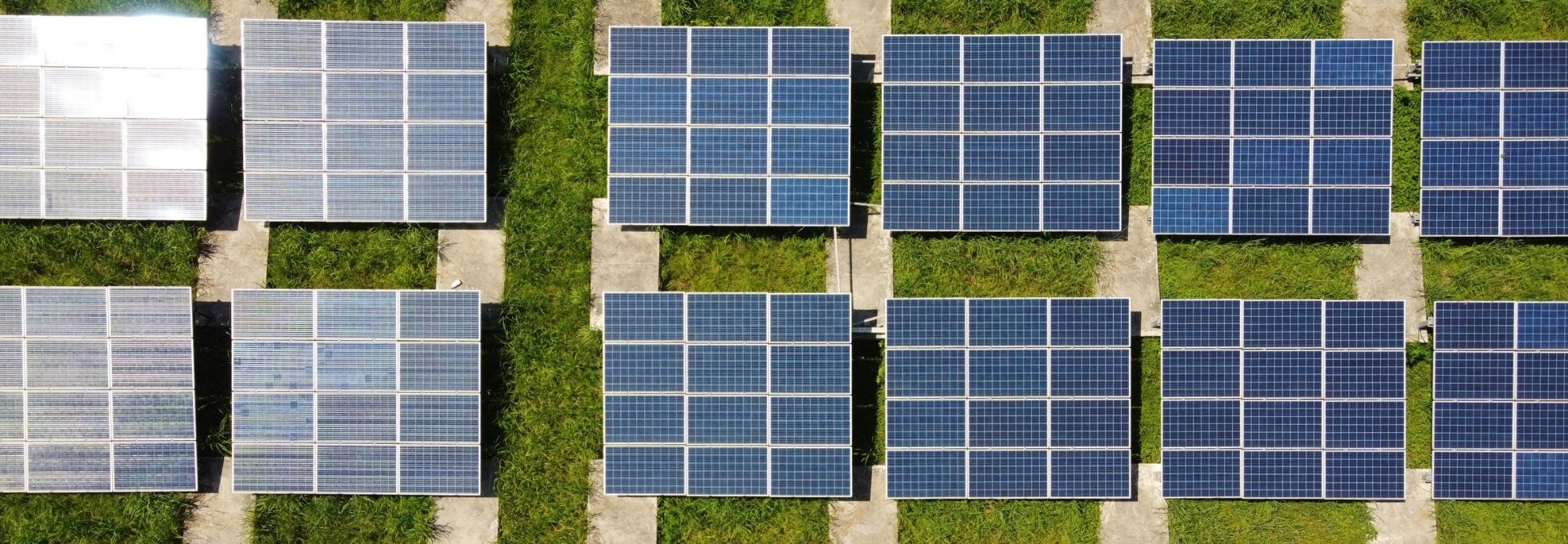
About Solar Energy
Solar energy is abundant and is the cleanest renewable energy resource available. The radiant heat and light of the sun are converted into thermal or electrical energy and used for generating electricity for residential and commercial establishments, for making hot water, cooking, and heating buildings.
Solar power is a cheaper and more efficient energy source. If suitably harnessed, solar energy possesses the potential to meet all the future energy requirements.
Due to its inexhaustible supply, non-polluting, and sustainable characteristics, solar energy is the most preferred energy option, unlike fossil fuels (coal, petroleum, oil) that are non-renewable, i.e., finite.
Deploying solar not only allows for increased energy independence but also has economic benefits. Many nations, one being the U.S., spend more than 5 billion every year on imported oil.
Solar energy produces no greenhouse gasses, unlike conventional fuels which emit harmful carbon. Decarbonised development is increasing human development levels within nations while having a carbon neutral impact on the environment.
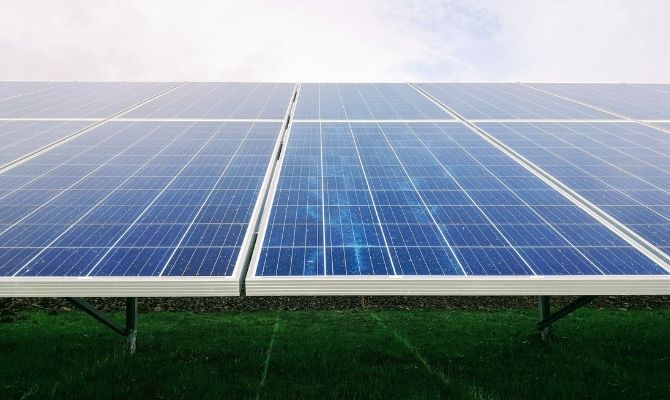
Solar Technologies
Solar energy is harnessed using three primary technologies: photovoltaics (PV), concentrating solar power (CSP), and solar heating and cooling (SHC) systems.
- Photovoltaics
Solar energy can be converted into electrical energy by means of PV – photovoltaic cells (photo = light, voltaic = electricity). A photovoltaic array comprises solar photovoltaic panels or solar modules containing solar cells for electricity generation.
The photovoltaic effect is used commercially as photosensors (sensors of light or other electromagnetic radiation) or for electricity generation. Silicon is used to make solar panels that convert sunlight into electricity using photovoltaic technology. Copper solar cables are used to connect arrays.
Photovoltaic installations may be ground-mounted (mounted to a pole, tower, or other freestanding structure), rooftop-mounted (directly attached or affixed to the roof of a building), wall-mounted (fixed to a wall), or floating.
The mount is either fixed or a solar tracker is used to follow the sun across the sky.
- Concentrating Solar Power (CSP)
CSP uses the thermal property and converts heat from sunlight to generate electricity that is used for electrical turbines. CSPs are designed to hold mirrors and lenses that concentrate sunlight to convert into heat, which is in turn transformed to generate electricity.
In this mechanism, the generated thermal energy drives the heat engine that is connected to the electric power generator.
The thermal energy concentrated in a Concentrating Solar Power plant can be stored and utilized to generate electric power when it is required, day or night.
- Solar Heating and Cooling Systems (SHC)
SHC technology collects the thermal energy from the sun, converts it into heat, and uses it to provide hot water deposits, space cooling, and heating techniques for residential and commercial applications. The technology is intended to replace electric power or natural gas.
All About Solar
This section highlights the benefits of solar energy systems, how solar energy is produced, types of solar panels, the concept of Net Metering, and maintenance of solar panels.
How Solar Panels Work?
The solar panels absorb light and heat from the sun. The sun emits light and heat in the form of photons. The silicon and the photovoltaic cells (semiconductors of light) in the panel convert this light into direct current (DC) electricity.
The glass that envelops the silicon photovoltaic cells is wrapped in an anti-reflective coating to aid the panels grab the most sunlight viable and, in turn, produce an optimal amount of electric power. This electricity travels into an inverter, which converts the direct current (DC) into AC (alternating current).

The alternating current (AC) then powers the residential and commercial establishments and is distributed accordingly for certain applications and for heating buildings. In some cases, the solar power is stored in battery tanks.
Solar panels are usually installed as ‘grid-connected.’ When the panels are generating more electricity than required, the excess power is sent back to the grid. And when more electricity is needed, then your home can draw additional required electricity from the grid.
How Solar Energy Works?
Solar energy is an abundant energy source that is formed by converting radiant light and heat from the sunlight into electrical or thermal energy. It is created by nuclear fusion (proton-proton chain reaction) that takes place in the sun.
The energy can be harvested and used locally, even in colder climates.
Conventional fossil fuels come from carbon-rich (decomposing plants and animals) remains on earth, are non-renewable, and cause pollution by releasing carbon dioxide and other greenhouse gases.
Solar energy is a renewable (clean and natural) free source of energy that is sustainable and totally inexhaustible, unlike finite and conventional fossil fuels (coal, oil, and gas).
It does not cause any pollution nor does it contribute to any greenhouse gas (GHG) emissions when producing electricity.
What Is Net Metering?
Net metering (also known as net energy metering or NEM) is a utility rate structure or solar incentive that credits solar energy system owners (both commercial and residential) their own excess solar electricity to be used at a later time.
Net meters work by an uninterrupted sampling of how much power is produced and how much power is used—the meter records instant readings of generation and consumption at your premise.
These recorded readings are then collected, incorporated in the suitable register over the electricity billing cycle.
The major benefit of net metering is that it allows the utilities and the electricity grids to reap gains from the influx of minimal-to-nil-cost solar power onto the electricity grid.
When the solar systems are generating more electricity than needed at any point during the day, the power is sent back to the grid, making the electric power meter run in reverse thereby reducing the power bills.
Net metering encourages customers to transition to renewable energy and also helps take some pressure off the electric grids.
Advantages of Solar Energy
- Installing solar panels reduces dependence on non-renewable fossil fuels and reduces household carbon footprint. Solar power systems offer an energy efficiency rating between 15 and 20 percent and do not produce any noise pollution because of the absence of any moving parts, which is a huge benefit.
- Solar energy drastically reduces your energy bills. This is because by installing solar panels on your rooftop, you produce your own electricity and are less reliant on your electric meter. A solar panel system typically has a 25 to 30 years output warranty, thus ensuring decades of effective performance.
- Solar power adds value to your property. According to several studies, a 5kW panel installed on your rooftop could add around $28,000 to the property value, thereby suggesting that it is a beneficial investment.
- Solar energy systems require minimal to no maintenance. The only thing you need to take care of is proper cleaning of the solar panels at least two times a year. The average expense of a yearly inspection by a trained and qualified inspector is around $150.
- It is a promising source of energy for remote areas that are still not connected to power grids. For example, in regions such as those of Sub-Saharan Africa where 90% of the rural population does not have access to clean light.
How Is Solar Energy Produced: A step-by-step guide
Step 1: Sunlight activates the panels
The solar cell, i.e., photovoltaic cell, is the basic element that is used to generate solar energy. These solar cells made up of silicon absorb sunlight during daylight.
A layer of silicon cells (polycrystalline silicon boules), a metal frame, a glass casing enveloped by a special film, and wires are used to make the solar panels.
The panels are grouped together into arrays, and placed on rooftops or in spacious outdoors, to produce solar energy.
Step 2: The cells produce an electrical current
Each individual solar cell has a thin semiconductor wafer made from two layers of silicon. An electric field is formed when one layer gets charged positively and the other gets charged negatively.
The photovoltaic cell gets energized when the light energy from the sun hits it and causes electrons in the atoms of the semiconductor wafer to become loose.
The loose electrons are set into motion by the electric field formed in the wafer, which results in creating an electric current.
Step 3: The DC electrical energy is converted to AC
The type of electricity that powers homes is alternating current (AC), whereas the type of electricity generated by solar panels is direct current (DC). An Inverter helps in converting Direct current to Alternating current.
The new solar energy system can have these inverters configured either as one inverter for the entire system or as individual micro-inverters for each individual panel.
Step 4: The converted electricity powers your home
The DC converted to AC electricity runs through the electrical panel and is distributed within the home to power up gadgets and appliances without any changes required in your home. Any additional electricity to supplement any solar shortages can be managed by using the services of your traditional power company.
Step 5: A net meter measures usage
A net meter measures the usage and flow of electricity in both directions, to and from your home. Your power utility company may provide credits for any surplus power you send back to the grid that has been generated by your solar panels.
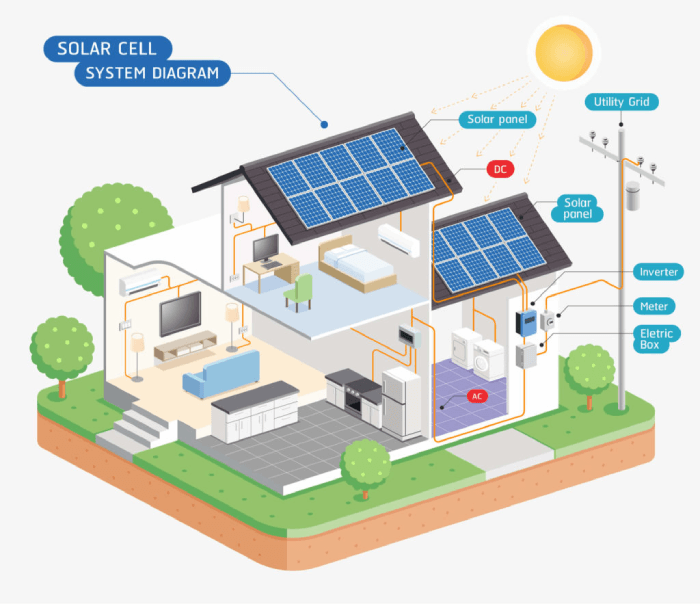
Types of solar panels
There are 3 main types of solar panels:
- Monocrystalline solar panels
Monocrystalline (single-crystal silicon) solar panels consist of cells made using silicon wafers. These panels are a bit pricey in comparison to polycrystalline solar panels. However, these are more efficient of all three and the solar cells are a black hue.
- Polycrystalline or multi-crystalline solar modules
Polycrystalline solar panels come in blue color and these also consist of cells made using silicon wafers. The major difference between monocrystalline and polycrystalline solar panels is that polycrystalline consists of several crystals of silicon in a single PV cell. These have lower efficiencies in comparison to monocrystalline options, but their biggest benefit is a lower price point.
- Thin-film solar panels
Thin-film solar panels are second-generation solar cells. They have lower efficiency and poor performance when compared to monocrystalline and polycrystalline solar panels. The only benefit is that these are portable and flexible
Solar Panels Maintenance
Solar panels generally require minimal maintenance in order to function properly. Periodic cleaning to ensure that dirt, dust, dry twigs, leaves, and other kinds of debris are not obstructing the sunlight is usually enough. However, the maintenance is extensive if the user resides in an area that receives heavy snowfall, or if there is a substantial reduction in energy output.
The tilted solar panels allow rainfall to clear away the dirt and debris. If there haven’t been any rains, it is important to ensure that the panels are cleaned manually for their proper functioning. It is generally recommended that you clean solar panels two to four times per year.
In winter, you may need to clean your panels after every heavy snowfall. Never use hot water when clearing snow off the panels as it can crack the tempered glass.
Source: RPS Solar Pumps
Is My Home a Good Fit for Solar?
Not every house is fit for installing solar energy systems. Below given factors will help in deciding whether your house is a good candidate for having a solar energy system.
Roof Orientation
The solar panels should be located at a place where the maximum amount of solar radiation reaches them, to extract maximum energy from the solar energy system. Generally, in the Northern Hemisphere, the best location for solar panels is on a south-facing roof.
Some suggest that the west-facing orientations are better as these systems produce energy later in the day when electricity is generally expensive.
As per experts, to extract the maximum benefit from the solar energy system, around 100 square feet of unshaded roof space is required to generate one kilowatt of electricity. It has been observed that the amount of solar radiation reduces if your roof faces South-East or South-West.
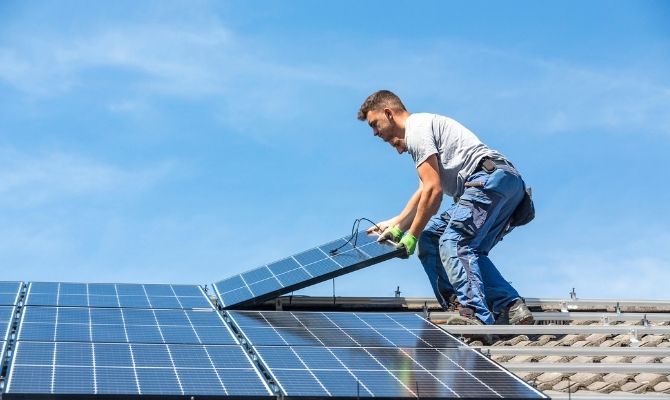
You should avoid installing panels in areas that get covered in a shade from trees, adjoining buildings, chimneys, etc. Also, you should remember that shading in an area changes from summer to winter due to a change in the path of sunlight.
Solar energy system installation professionals should estimate the shading your system will receive and give recommendations.
Roof Condition
The roof should be in a good condition so that it can hold the weight of the solar energy system. The roof should be able to withstand about 3-5 lb per square foot and sturdy enough to last for at least 30 years. If your roof doesn’t meet these conditions, then you will need solar roofing.
Electric Bill
Invest in a solar system only if you are paying more than 100 dollars per month for electricity.
Home Ownership
Only a house owner can install a solar energy system.
Be sure to choose a trusted solar energy company that uses reputed products, has a good installation experience, and has good customer reviews as well.
Why Go Solar?
Most people install solar energy systems at their homes or business premises for economic benefit.
Three main ways to think about installing a solar energy system from a financial perspective are:
1. it will drastically reduce or even eliminate your electric bills,
2. you will avoid rising energy costs, and
3. earn a great return on your investment.
1. Help Protect the Environment
Solar power systems are a source of a clean, sustainable, consistent, and renewable form of energy that is readily available and free. This energy does not pollute the environment and does not emit greenhouse gases, which are the major contributors to climate change and global warming. Thus, it reduces our collective dependence on conventional and exhaustible fossil fuels and helps reduce our carbon footprint.
Solar panels generate energy without using water and this could help in water conservation by addressing the water scarcity issue, which is a global problem.
2. Earn Great Returns
The solar power system is a dependable, cost-saving financial product as it ensures returns ranging from 10 percent to more than 30 percent annually. With the right approach and when done appropriately, the installation of solar panel systems could reduce the monthly electricity bills of an average user by 40-70%.
The payback period of a solar purchase for an average user is only 8.5 years which is comparatively a very fast payback period. Not only do users get a great return on their solar investment, but they also receive free power for the remainder of their solar system’s lifespan of 25+ years.
On average, a solar energy system gives you a return on investment (ROI) of greater than 20% throughout your lifetime.

3. Avoid Utility Inflation
Inevitably, electricity prices are accelerating high as time passes by. In the last ten years, there has been a spike in the prices of about three percent annually. Cost savings can only happen if these prices are managed well. Using solar energy can help you to reduce the power cost considerably and even predict upcoming consumption costs. Solar, being self-generated energy, reduces power bill anxiety and unprecedented power bill hikes.
For those having difficulties to buy and instal expensive solar panels, they can opt for convenient solar loans or solar power purchase agreements (PPA). A number of these finances come with zero upfront costs, yet reducing the power bills from the very first day. What’s more, your power bills will be more or less constant—just the monthly repayments of installation charges.
4. Increase Property Value
As per the real estate market, the houses with solar energy systems installed increase the value of the property and could sell up to 20 times faster. It also increases the efficiency and appeal of the house.
You will get assurance to yourself and anyone who would buy your house for the low energy costs in the long run. People interested in buying a house for themselves look for dwellings that are energy efficient.
5. Support U.S. Energy Independence
The U.S. Congress passed EISA (Energy Independence and Security Act) in 2007 devised to propel the U.S. towards the provision of energy independence with the production of clean renewable fuels. Despite this, the nation continues to import significant quantities of crude oil from oil-rich nations.
This has led to the dominance of fossil fuels from non-renewable and conventional energy sources over clean and renewable energy sources.
These factors have influenced the United States to become more energy resilient to a greater degree, but definitely not energy independent.
However, there have been constant efforts towards transitioning to solar and wind energy, expanding the development of clean energy systems.
6. Solar Industry Is Creating More Job Opportunities
Research by several institutes has reported that the solar industry is not only a tool to transition from conventional to a non-conventional and clean energy source, but also provides more job opportunities.
Jobs are created in the manufacturing, construction, operation, installation, and maintenance sphere of solar panel installations.
According to the census, since 2010, there is an upward trend in the addition of green jobs—the solar industry alone has opened about 150,000 job positions, and between 2013 and 2018, solar employment grew 11 percent annually.
7. Reduce Bills Due to Solar Energy Cost
Solar energy is the most affordable and environmentally responsible method of producing electricity. With governments offering subsidies and incentives, the cost of producing solar power is rapidly declining.
A fully-installed solar system (6 kW hour residential solar system) in 2009 was priced at $50,000. Now, the same costs only a fraction of that amount, i.e., $16,000 to $21,500, which is a 62 percent average annual reduction.
The residential solar system prices are at their lowest in over three decades. The payback period is five to eight years in which the initial costs of the installation can be recovered.
The reduced costs, increased efficiency, monetary benefits, and increased growth for solar makes it the most feasible energy option.
The energy experts also report that there will be record-breaking additions in terms of solar energy capacity annually that would revolutionize and maximize power production.
8. Support Renewable Energy
Energy sources from water, sun, wind and geothermal energy are inexhaustible renewable energy sources. In other words, for something to be renewable (inexhaustible), it doesn’t get depleted when it’s used.
Many nations have already made the shift. For example countries like Iceland get 85% of their electricity from renewable energy resources. Norway is another example where 98% of the electricity is obtained from renewable energy resources. Others following the trend include Scotland, Germany, Paraguay, Denmark, and Portugal.
A key aspect of achieving the inexhaustible and clean energy vision is gathering public support for interventions and policies that will rapidly advance the transformation to 100% renewables.
Where millions of people around the world still do not have access to clean light, one renewable energy form called solar energy has been a ray of light to bolster energy security and support a stable economy in a sustainable manner.
Conclusion
Renewable energy sources (wind, solar, and hydro energy) have the potential to reduce carbon footprints, slow down climate change, create millions of jobs and innovate clean energy technologies. Not to mention, the biggest advantage of the sun, wind, and water is that these provide us with healthy, green, and clean infinite energy.
It is beyond obvious that our dependence on conventional energy resources like coal and oil has irreversible negative impacts on our health as well as the environment. Complete transition to non-conventional and renewable energy resources is the need of the hour.
A lot has been done and a lot needs to be done. In saying that, as more and more nations are leapfrogging from the exhaustible and harmful energy resources to clean and inexhaustible ones, all the stakeholders need to contribute to a healthier world.
The aim and intent are to set and attain the goal for generating 100% of the energy needs from clean renewable sources.
Now that you have a better understanding of all the advantages and benefits of installing solar panel systems, it is time to start thinking about the right choice for you.
POPULAR POSTS

Solar Panel Cost in 2021: Can You Afford it?
Solar Panel Cost in 2021: Can You Afford it? Facebook Linkedin Link According to the Solar Energy Industry Association (SEIA), over the last decade, the
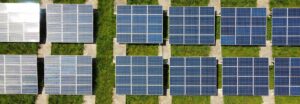
Solar Power 101: How Does Solar Energy Work?
Solar Power 101: How Does Solar Energy Work? Facebook Linkedin Link About Solar Energy Solar energy is abundant and is the cleanest renewable energy resource

